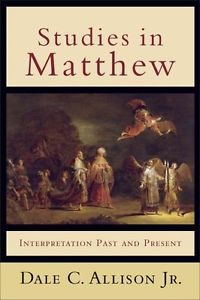Wiarda, Timothy. Interpreting Gospel Narratives: Scenes, People, and Theology. Nashville: B&H, 2010.
This book just leaps right in without setting the Gospels in a larger canonical or redemptive-historical context. What seemed abrupt upon first entering the book may have been intentional. Though Wiarda does talk about the Gospels and redemptive-history at a few points, he is, it seems, seeking to balance what he perceives to be a redemptive-historical imbalance in Gospel interpretation. He is cautious about how one allows the OT to influence Gospel interpretation even in places where it is alluded to or quoted. Instead, he continually emphasizes interpreting the individual Gospel accounts as cohesive accounts. It is not that he rejects these other approaches; he simply does not wish for them to overshadow the accounts themselves. In making this case, Wiarda speaks of the need to pay attention to characters other than Jesus, to their emotional state, and to character development. He is aware that popular preaching has often emphasized these aspects of the Gospel narratives in a problematic way and to the exclusion of a redemptive-historical approach, but Wiarda is more careful than that.
Wiarda also provides some helpful treatments of how to trace plots, observe characters and their development, discern a narrative passage’s main point, etc. He also includes a very helpful chapter on the various ways that individual units can be linked to one another within Gospels.
This would not be my first recommendation for a book on interpreting Gospel narratives. I’d recommend something that provided the explanation of how to interpret individual pericopes within a more global framework. Nonetheless, I found this a helpful book. It made me think consider some strong tendencies I have about how to and how not to interpret the Gospel narratives. I tend to favor redemptive-historical approaches, and this provided some cautions to making that an exclusive approach.

 Allison, Dale C., Jr., “Reading Matthew through the Church Fathers.” In Studies in Matthew: Interpretation Past and Present. Grand Rapids: Baker, 2005.
Allison, Dale C., Jr., “Reading Matthew through the Church Fathers.” In Studies in Matthew: Interpretation Past and Present. Grand Rapids: Baker, 2005. Allison, Dale C., Jr. “Excursus 1: The Kingdom of God and the World to Come.” In Constructing Jesus: Memory, Imagination, and History. Grand Rapids: Baker, 2010.
Allison, Dale C., Jr. “Excursus 1: The Kingdom of God and the World to Come.” In Constructing Jesus: Memory, Imagination, and History. Grand Rapids: Baker, 2010.